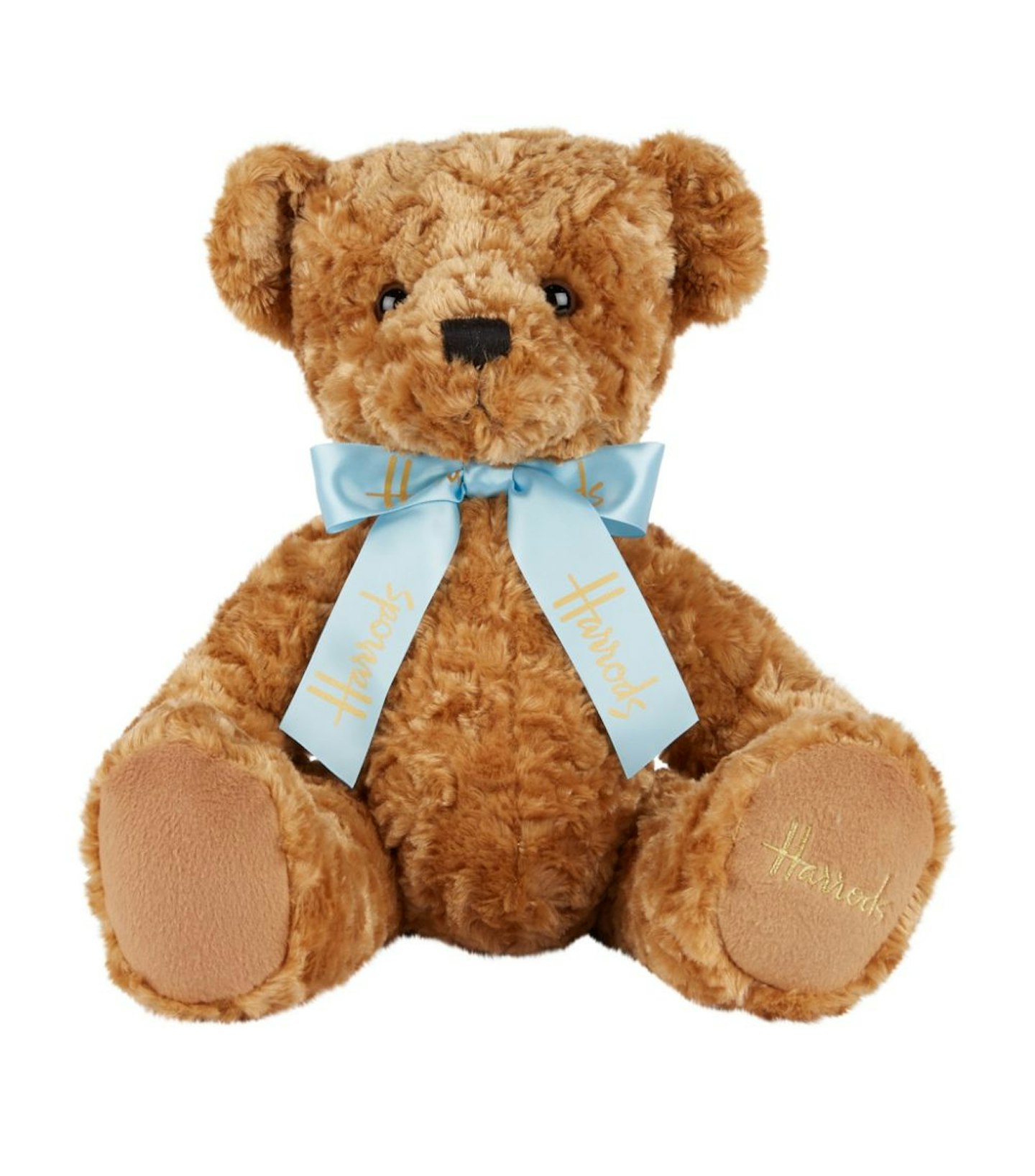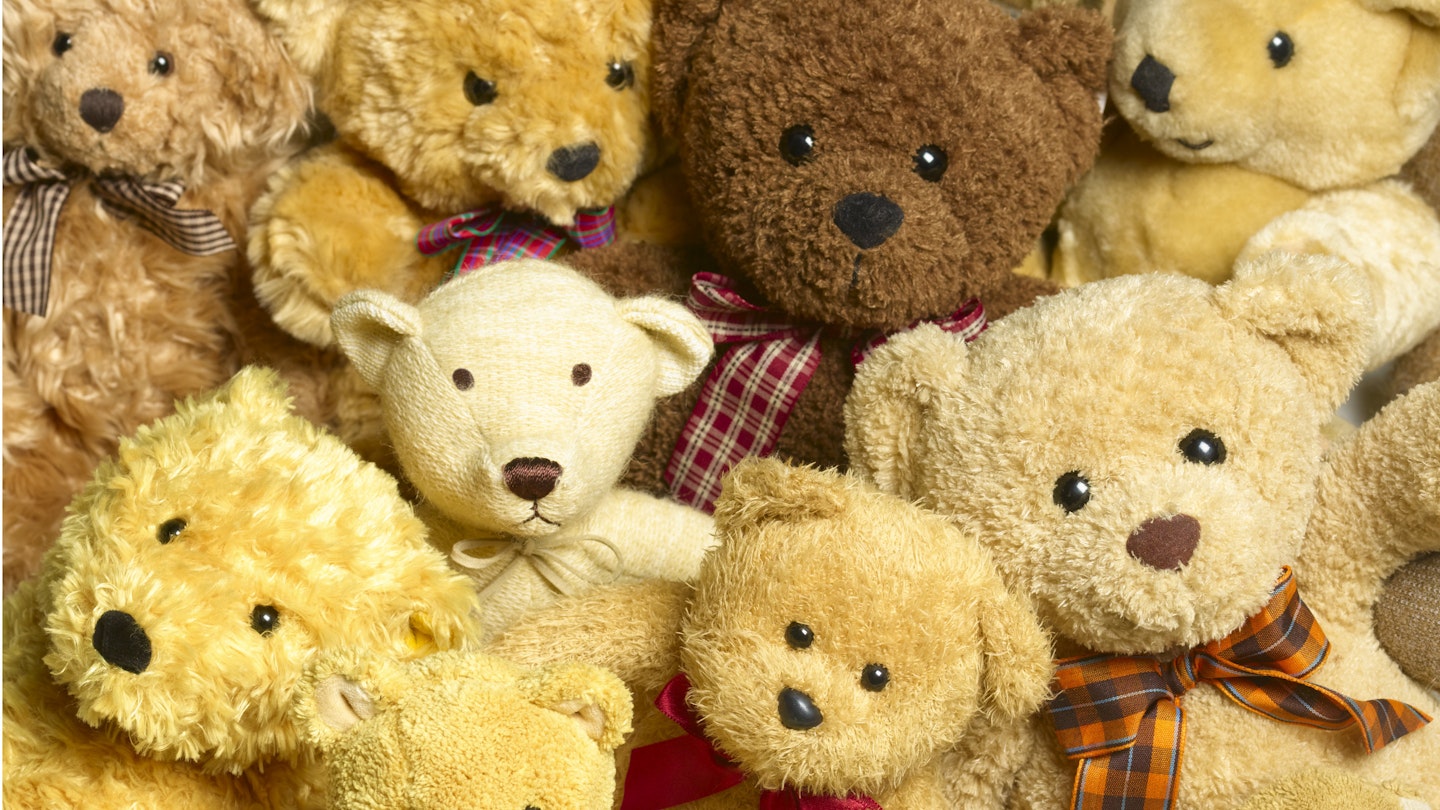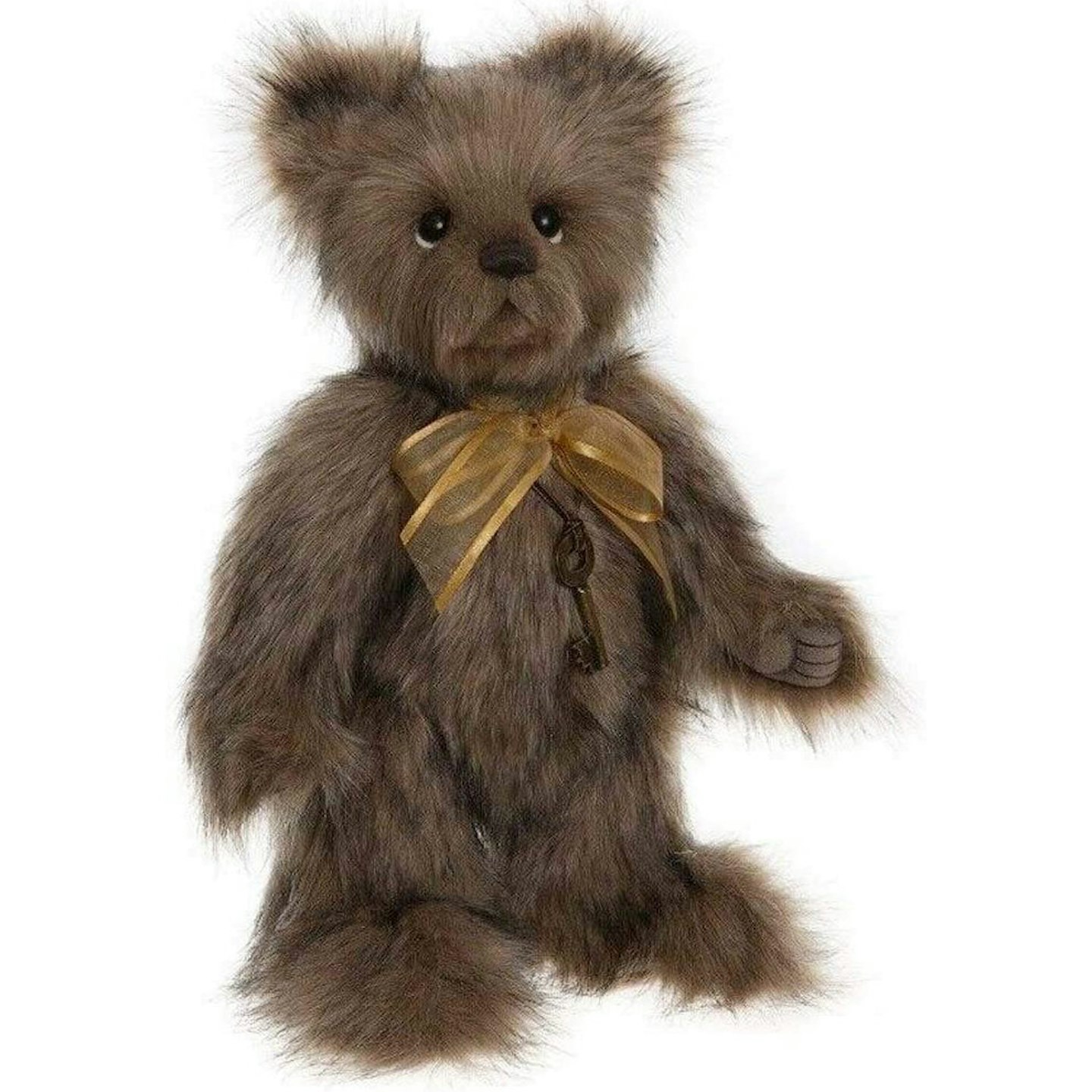Take a cursory look around any typical childhood bedroom today and chances are it’s nothing like the ones we grew up in. But peek under the piles of tech and toys and you’ll probably find one object in common with almost every child’s bedroom since the Thirties.
Playground crazes have come and gone but the humble teddy is still the favoured possession most children choose to cling to at night, just like we did as youngsters. But why is this?
To uncover the teddy bear’s enduring appeal, we spoke to Sarah Holmes, Managing Director of Merrythought, the teddy bear company her great-granddad established 90 years ago this year, making it Britain’s oldest remaining teddy bear manufacturer.
“I’ve been so impressed that the teddy bear has stood the test of time,” says Sarah, who spent much of her childhood surrounded by teddies from the family business.
“I suppose a teddy bear is that first childhood companion, who is with you through good times and bad and always alongside you in your journey through life.”
While teddies were initially developed in Germany and the US in the early 1900s, Britain certainly has its own rich teddy bear history.
That's largely because when the First World War struck, the import of teddy bears from Germany was banned, forcing British mills to make their own. Merrythought’s founder and Sarah’s ancestor Gordon Holmes, who owned a mohair spinning mill in Yorkshire, was one of the early pioneers to recognise the potential of making beautiful British bears.
Read next: 1970s toys for the best playtime nostalgia
Did you know? In 2019, the Mexican town of Xonacatlán won the Guinness World Record for a giant teddy bear measuring 20m long and weighing 4 tons!
The early designs were largely created by a remarkable designer called Florence Attwood, who was both deaf and mute. Even now Merrythought’s modern bears, which are still made by hand, hold a clear resemblance to those now classic originals. But as Sarah explain's explains, there have been some subtle shifts in what we want from our bear friends over the years.
“Historically, teddy bears were a bit stiffer, firmer and a bit grumpier looking,” Sarah laughs. “Modern bears tend to have a friendlier personality, are softer to touch and are a bit rounder and cuddlier.”
Teddies - A collector's item
While some teds are just for snuggles, there is of course a booming interest in buying teddies to collect, with some bears worth a small fortune. Teddies made by German manufacturer Steiff are some of the most valuable with their early creations, known as rod bears for their internal iron rods (only seen with an x-ray), fetching up to £120,000. As well as early bears, teds only made in limited numbers can also be very valuable to teddy collectors, known as arctophiles. For example, in 1912 when the Titanic sank, Steiff made 500 ‘mourning bears’ with black fur and red-rimmed eyes in sympathy for the victims. These teddies now sell for £16,000 or more.
If you’re wondering if your old ted might be valuable, look for clues of its past such as labels or manufacturing trademarks. Teddies in rare colours, such as the teal-coloured Farnell bear, may be a sign of value as can special features such as feet made of different fabric or oversized limbs. Your local auction house may be able to provide more details and show what similar teddy bears have sold for previously.
Another big trend in teddies has of course been bears to mark special occasions and Merrythought has made special edition teddies to mark everything from Jubilees to the official bear for the 2012 Olympics.
Its latest, the Bevan Bear, has been released to mark the 72nd birthday of our wonderful NHS. But whatever the bear, whether it’s new and natty or dog-eared and tatty, it certainly seems there’s something innate in us that just can’t resist a cuddly bear. And the science proves it.
Psychologists have found the characteristics of bears have evolved over the years to have the exact facial features and dimensions that triggers a response in our brain that makes us want to cuddle them. Other studies found teddy bears are uniquely good at reducing trauma and stress in childhood.
No wonder then that these soothing associations of teddies can continue into adulthood and may be the reason that as many as one third of British adults still sleep with their teddies.
Cuddling teddy bears, “evokes a sense of peace, security and comfort,” says psychologist Corrine Sweet in response to one study on the teddy bear effect, while other psychologists have pointed out teddies reduce a sense of loneliness even in adulthood, just as they did as children when they brought us comfort at night when Mum wasn’t by our side.
It’s probably the reason Sarah says she often receives letters from customers in their 80s and 90s, telling her how much they still adore their teddies, just as they did as children.
As for the future of teddies, having made it this far, Sarah can’t see the popularity of them dying out any time soon. “Having lasted so long it’s clear the teddy bear still very much has its place in our lives – and long may it continue,” she says.
If you would like to find out more about Merrythought teddy bears visit www.merrythought.co.uk
The best teddy bears for collectors
Whilst we may receive commission for purchases made through our links, we never allow this to influence product selections.

A Steiff bear may be pricey but these special little bears are a real collectors item and they're bound to be a best friend for life for any child.
This standing bear may not seem the cuddliest of companions but he's a great bear to have sat on the shelf with any other Charlie Bear's you might collect over the years.

www.harrods.com
A classic teddy bear from Harrods, this is a special addition to anyone's teddy bear collection with the classic Harrods embroidery on the paw.

